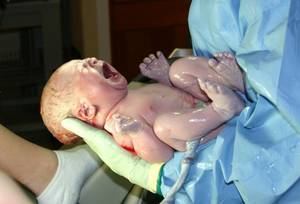Zika virus can damage neural stem cells and developing brain tissue  in culture making it a likely cause of the microcephaly cases in Brazil, scientists have announced this week.
in culture making it a likely cause of the microcephaly cases in Brazil, scientists have announced this week.
The Brazilian outbreak of Zika virus, named after the region of Uganda where the virus was first described in the 1940s, began, studies estimate, some time in 2013.
In 2014, health officials began to notice cases of a febrile illness resembling dengue fever and characterised by a rash, sore eyes and aching muscles.
Subsequent tests confirmed the presence of the genetic material of Zika virus in the blood of affected patients but also showed that only about one person in five was clinically symptomatic.
More worrying was that, at the same time, a 20-fold increase in cases of microcephaly - infants born with abnormally small heads - was reported in northeastern Brazil.
Tests on some of these newborns showed Zika virus was present in the placenta and also in the amniotic fluid that surrounds a developing baby, leading scientists to suspect that the virus might be able to damage the brain of a developing foetus. Reports have also shown that affected infants also have eye damage, joint abnormalities and extra skin over their scalps.
However, there has been speculation that larvicides added to drinking water to control the mosquitoes that spread other diseases, like dengue, might be responsible, or that the increase in microcephaly cases might merely be down to over-reporting.
Now, writing in Science, Federal University of Rio de Janeiro scientist Patricia Garcez, has shown that the Zika virus can damage the stem cells from which the brain forms and also developing brain tissue.
The Brazilian team carried out the work using cultured brain stem cells, known as neurospheres, and also miniature blobs of neural tissue called brain organoids.
The tissue was obtained by reprogramming other cells in the body to become progenitor cells capable of turning into neural stem cells.
Infecting the neurospheres with Zika virus led to the death of the majority of the stem cells in under a week, showing that the virus can directly damage the cell types that give rise to the developing nervous system.
Infection of the brain organoids, which structurally resemble the brain of developing baby during the first 12 weeks of development, showed a 40% reduction in development.
Critically, these changes, either in the neurosphere or in the brain organoids, were not seen when the tissue was infected with dengue virus, which is a close relative of Zika and also very common in Brazil.
This shows that the brain cell changes were not merely a general feature of infection but appeared to be specific to Zika.
According to Garcez, "our results, together with recent reports showing brain calcification in microcephalic fetuses and newborns infected with ZIKV [Zika virus] reinforce the growing body of evidence connecting congenital ZIKV to the increased number of reports of brain malformations in Brazil."









Comments
Add a comment